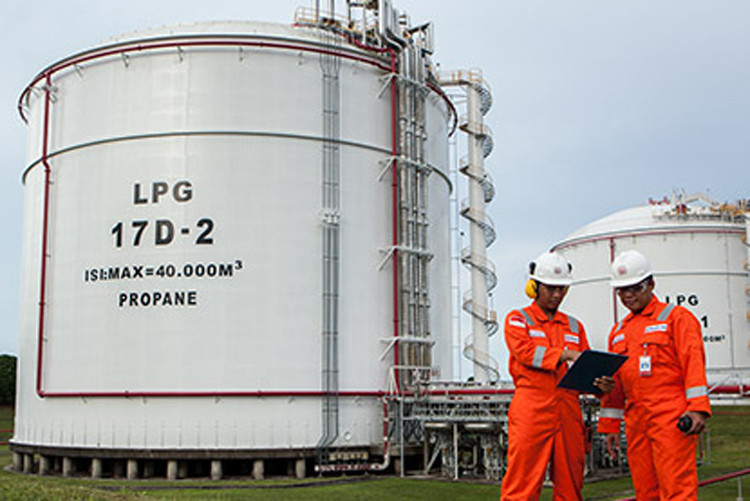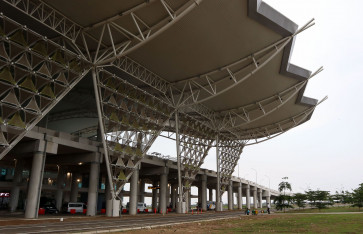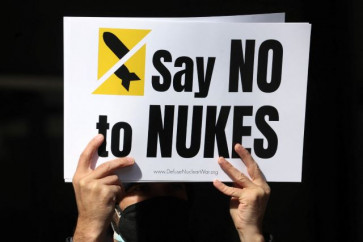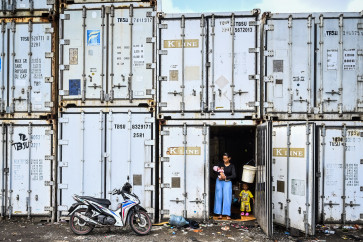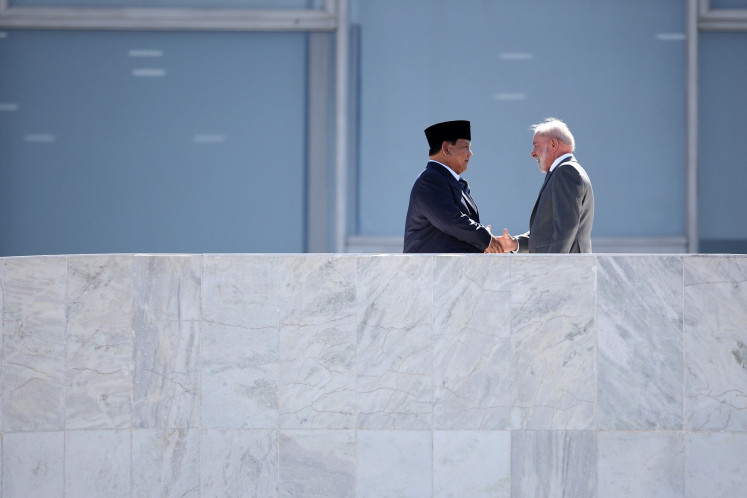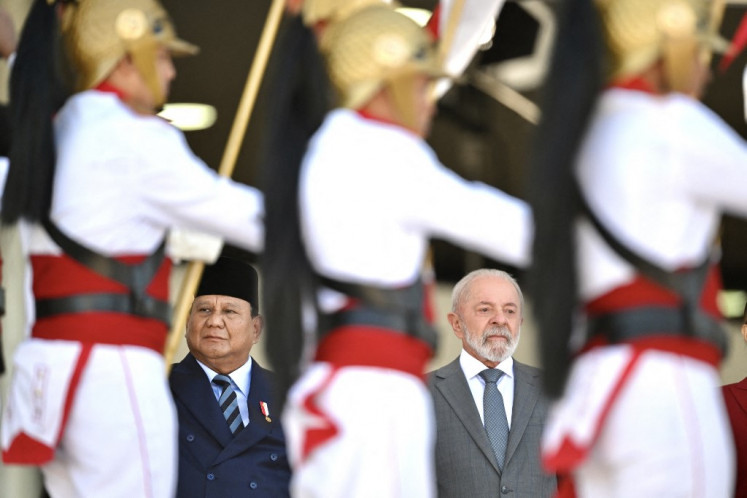Popular Reads
Top Results
Can't find what you're looking for?
View all search resultsPopular Reads
Top Results
Can't find what you're looking for?
View all search resultsBadak plant and the future of Indonesia’s LNG industry
Badak can play a role as an LNG hub to supply Indonesia's increasing demand for gas.
Change text size
Gift Premium Articles
to Anyone
O
nce known as the world’s largest liquefied natural gas (LNG) exporting country, Indonesia is transforming its LNG industry from its previous service as liquefaction plants only to the development of LNG receiving/regasification terminals or units. More than that, LNG products, which used to be entirely exported, are now absorbed mostly by domestic industries.
There are three LNG liquefaction plants currently operating in the country: Badak in Bontang, East Kalimantan, Tangguh in West Papua, and Donggi-Senoro in Central Sulawesi.
Badak used to be the largest LNG liquefaction plant in the world, consisting of eight production trains with a total capacity of 22.5 million tons per annum (MTPA) but is now operating only two of its trains.
The Donggi-Senoro plant is relatively small, producing 2 MTPA since it started operating in 2015, with all the products exported to Japan and South Korea.
The Tangguh plant started production in 2009 and is currently producing 7.6 MTPA from its two trains. The products are both exported and sold to the domestic market. To expand production, the operator of the plant, BP, started construction on its third train in 2016. However, due to the protracted COVID-19 pandemic, the project may not be completed by the end of 2022 as scheduled. Production of the third Tangguh train is planned to supply the Java-1 combined cycle gas turbine (CCGT) regasification unit in Lampung, several small gas-fired power plants in Papua, and leave some for exports to Japan.
Arun in Aceh used to be a fairly large LNG liquefaction plant (12.5 MTPA), but in 2015, it changed its function to a regasification terminal, processing LNG from domestic sources and sending the gas by pipeline to the domestic market, including North Sumatra.
The Masela project in South Maluku, which is projected to produce up to 9.5 MTPA, is making slow progress due to changes in government policies regarding the project’s location and gas utilization, as well as changes in its joint-venture management. It is estimated, however, that the Masela LNG plant might start operating in 2027.
To utilize LNG, three floating storage and regasification units (FSRU) operate domestically, namely the Lampung FSRU, the Nusantara FSRU in West Java and the Benoa FSRU in Bali. The Java-1 FSRU operation is waiting for LNG supply from the Tangguh-3 project. A small LNG receiving terminal is being constructed in Lamongan to meet East Java gas demand starting from 2023.
Following in the footstep of Arun, the Badak plant will soon be transformed into a regasification terminal.
Starting production in 1977, Badak has been decreasing in output since 2001 because of a decline in natural gas supply, especially after France-based gas producer Total Indonesia, the main supplier to Badak, left the area in 2017.
There will be potential supplies in the coming years, including those from the Jangkrik floating processing unit or other Indonesia Deepwater Development (IDD) projects. Not only do the projects remain uncertain, but their gas production is also not expected to be large enough to bring LNG production to the same level as when Badak was in its prime.
Japan, South Korea and Taiwan LNG consumers will no longer extend their purchase from Badak, considering Badak’s production capability, also because LNG supplies from other sources have grown in abundance. Qatar, Australia and Malaysia, for instance, are offering LNG with better terms.
Fortunately, there is an increasing gas demand from Pupuk Kaltim, a state fertilizer factory located just next to Badak. The factory is projecting demand for its products to increase and is expanding its production capacity. The continuous supply of natural gas at low prices is highly desired by the company, as gas serves as its raw material. About 70 percent of fertilizer production costs are for natural gas.
Badak and Pupuk Kaltim are discussing the possibility for the Badak plant to become an LNG regasification terminal that will fulfill the fertilizer producer’s gas demand. Badak LNG's facilities are still in good condition, including its huge LNG storages (of 635,000 cubic meter capacity), ports, ships, etc. Transforming the Badak liquefaction plant into a regasification terminal will certainly be cheaper than building a new one.
However, to only serve PT Pupuk Kaltim, Badak’s operation would be too costly. The regasification terminal should supply gas to several petrochemical industries around East Kalimantan, the Balikpapan oil refinery and possibly the planned new capital city.
Badak’s loss of foreign consumers can be partially replaced by domestic ones to accommodate the current low production level. The company has delivered LNG to gas power plants in Benoa and Cilegon in West Java through the FSRU facilities, including gas pipelines that have been built near the destination areas.
Badak will also send LNG to the Cilacap oil refinery in Central Java. It might employ technology such as small-scale LNG before it will be transformed fully into an LNG receiving terminal.
Badak can play a role as an LNG hub to supply Indonesia's increasing demand for gas. Indonesia needs a lot of natural gas to reduce its coal addiction in power generation.
Badak is not only about LNG but also liquefied petroleum gas (LPG). The country started phasing out kerosene 15 years ago and replaced it with LPG. While the program is quite a success in terms of providing clean energy, its increasing storage and distribution costs are a problem that needs a quick solution. Badak's large LPG storage capacity in this regard can be used as a hub for LPG distribution across the archipelago.
As an LNG exporter, Badak has contributed significantly to the revenue, especially in the early period of Indonesia's development. Badak's role as a state revenue source has decreased, but in the near future, it will regain its major role in strengthening national energy security.
***
The writer is a principal planner at the National Development Planning Agency (Bappenas). This is a personal view.

